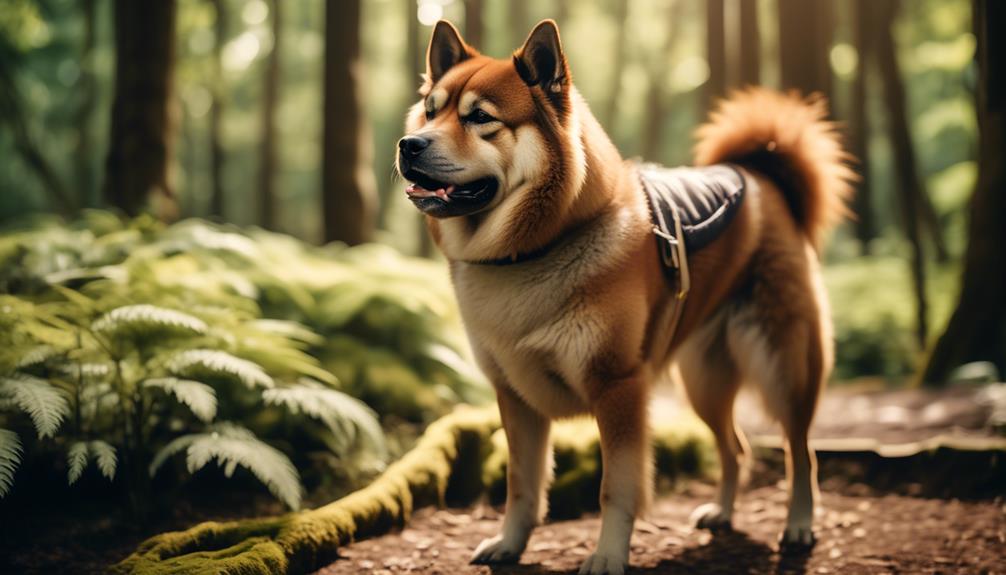
So, you think you know everything there is to know about dog breeds? Well, hold on to your leashes because we’re about to introduce you to a breed that will leave you begging for more information.
Get ready to discover the captivating world of Shikoku dogs. With their intriguing history, stunning coat colors, and impressive hunting skills, these Japanese natives are a breed like no other.
But that’s not all – we’ll also delve into their compatibility with families and other pets, their exercise needs, and the importance of proper coat care.
So, sit, stay, and get ready to be amazed by the wonders of the Shikoku dog breed.
Key Takeaways
- Shikoku dogs are one of the six primitive dog breeds native to Japan and are also known as Kochi-ken, ken, inu, Mikawa Inu, or Japanese Wolfdog.
- Shikokus have a thick double coat that comes in various colors, including red, red-sesame, and blackish or black-sesame.
- Shikokus were originally used by Japanese hunters to track and contain wild boars.
- Shikokus can adapt well to apartment living, but it is important to prioritize qualities such as being quiet, low-energy, calm indoors, and exhibiting good manners when living in close proximity to others.
Shikoku Dog Breed History
The history of the Shikoku dog breed dates back to the 1700s when they were domesticated by Matagi hunters in Japan. These dogs, also known as Kochi-ken, ken, inu, Mikawa Inu, or Japanese Wolfdog, were originally used by Japanese hunters to track and contain wild boars.
The Shikoku’s remote home in Japan’s mountainous island terrain helped maintain the breed’s purity. Despite their long history, Shikokus remain a rare breed, even in Japan. In 1928, the Nihon Ken Hozonkai (NIPPO) was formed to preserve the Shikoku and other Japanese spitz-type breeds.
Today, the American Kennel Club recognizes the Shikoku in their Foundational Stock Service group. Shikokus have a rich heritage as loyal and quiet companions to their human counterparts.
See another Dog breed profile.
Shiloh Shepherd Dog Breed
Shikoku Dog Breed Name Variations
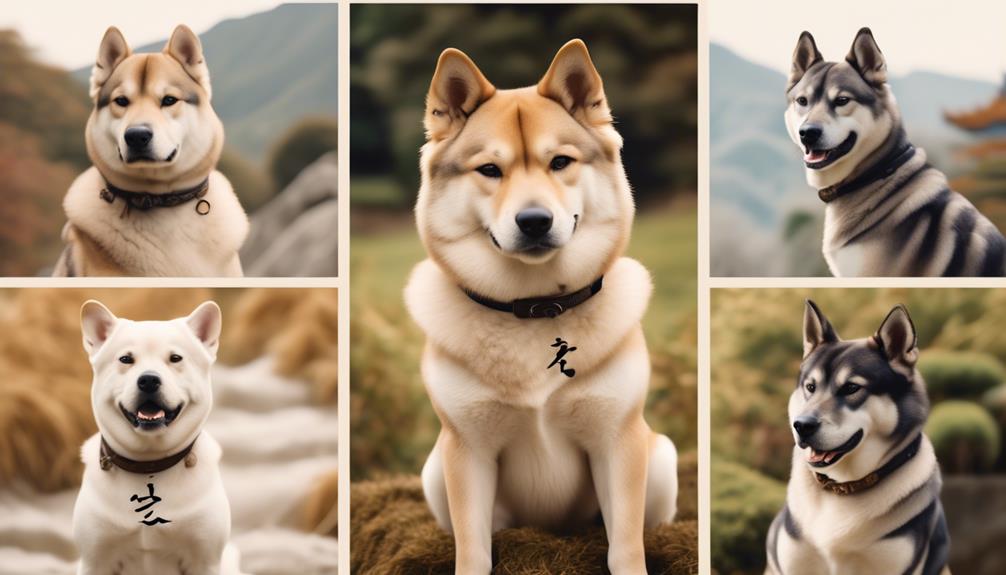
Also known as Kochi-ken, ken, inu, Mikawa Inu, or Japanese Wolfdog, the Shikoku dog breed has various name variations. These name variations highlight the dog’s origins in the Kochi Prefecture of Japan and its role as a hunting companion. Here is a table that summarizes the different name variations of the Shikoku breed:
| Name Variation |
|---|
| Kochi-ken |
| Ken |
| Inu |
| Mikawa Inu |
| Japanese Wolfdog |
These variations reflect the different aspects of the Shikoku’s identity and history. Whether you refer to them as Kochi-ken, ken, inu, Mikawa Inu, or Japanese Wolfdog, they are all referring to the same loyal and intelligent breed. These names showcase the rich cultural heritage and unique characteristics of the Shikoku dog breed.
Rarity of Shikoku Dogs
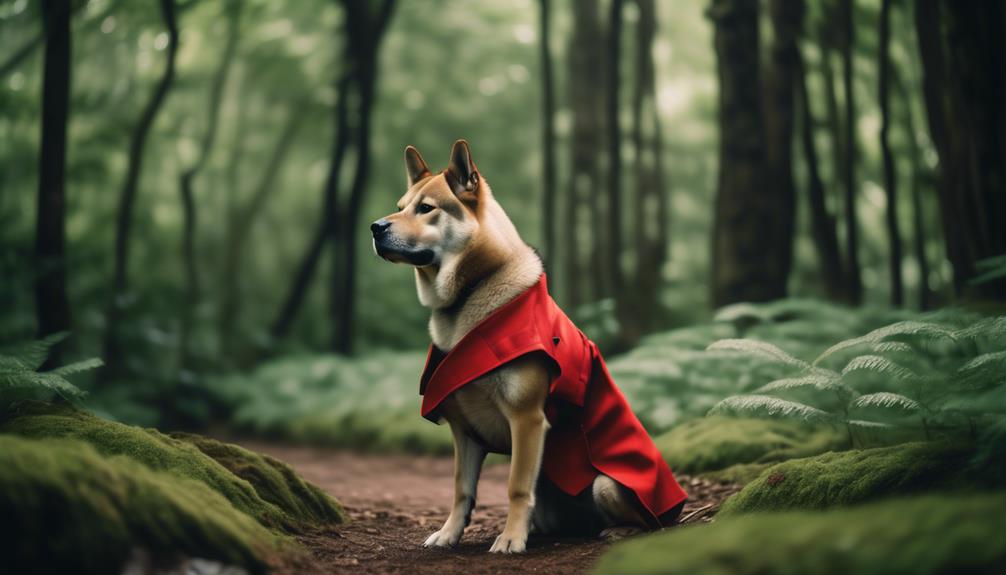
Shikoku dogs are considered a rare breed, even in their native country of Japan. Their rarity adds to their allure and appeal for dog enthusiasts around the world. Despite efforts to preserve and promote the breed, the number of Shikoku dogs remains relatively low. This scarcity makes finding a Shikoku puppy or adult dog a challenge.
In Japan, there are specialized breeders and organizations dedicated to the preservation of the Shikoku breed. However, even in Japan, it may take time and patience to locate a reputable breeder or rescue organization that has Shikokus available for adoption.
If you’re interested in owning a Shikoku, be prepared for a potentially long and arduous search. But the reward of having one of these rare and beautiful dogs as your companion will make it all worthwhile.
Shikoku Dog Coat Colors
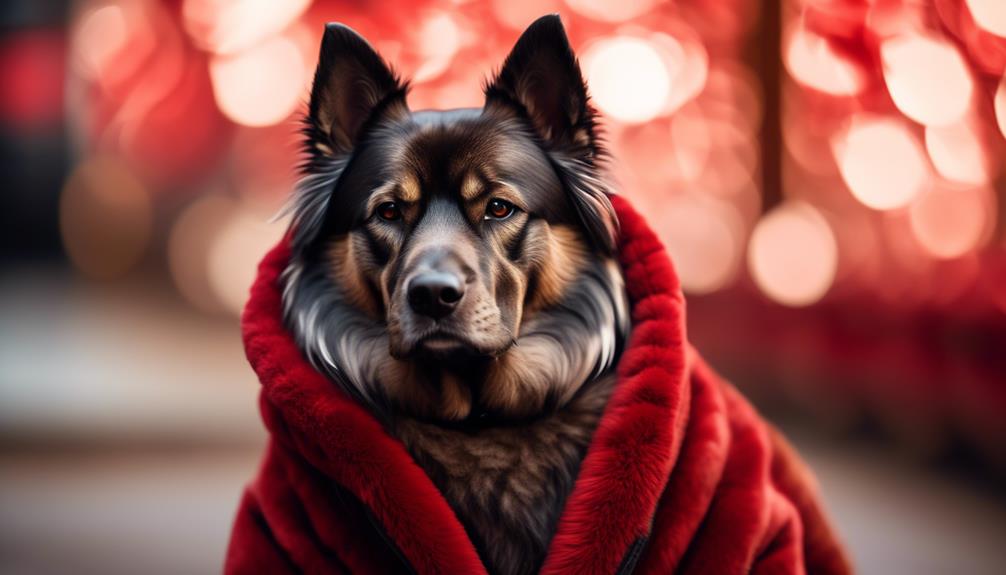
If you’re curious about the distinctive characteristics of Shikoku dogs, let’s now explore their captivating coat colors. Here are some of the beautiful coat colors that you can find in Shikoku dogs:
- Red: Shikokus can have a solid red coat color, which ranges from a light reddish-brown to a deep mahogany shade. This rich color adds a touch of elegance to their appearance.
- Red-sesame: Another stunning coat color is red-sesame, where the red hairs are interspersed with black or dark red hairs. This creates a beautiful sesame-like pattern that’s unique to the breed.
- Blackish: Some Shikokus have a blackish coat color, which can range from a dark charcoal gray to a deep black shade. This striking color gives them a bold and regal look.
- Black-sesame: Similar to red-sesame, black-sesame Shikokus have a mix of black and white or dark gray hairs. This creates a gorgeous sesame-like pattern that adds a touch of sophistication to their appearance.
The coat colors of Shikoku dogs truly showcase their beauty and uniqueness. Whether you prefer a solid color or a patterned coat, Shikokus are sure to captivate you with their stunning appearance.
Shikoku Dog’s Role in Japanese Hunting
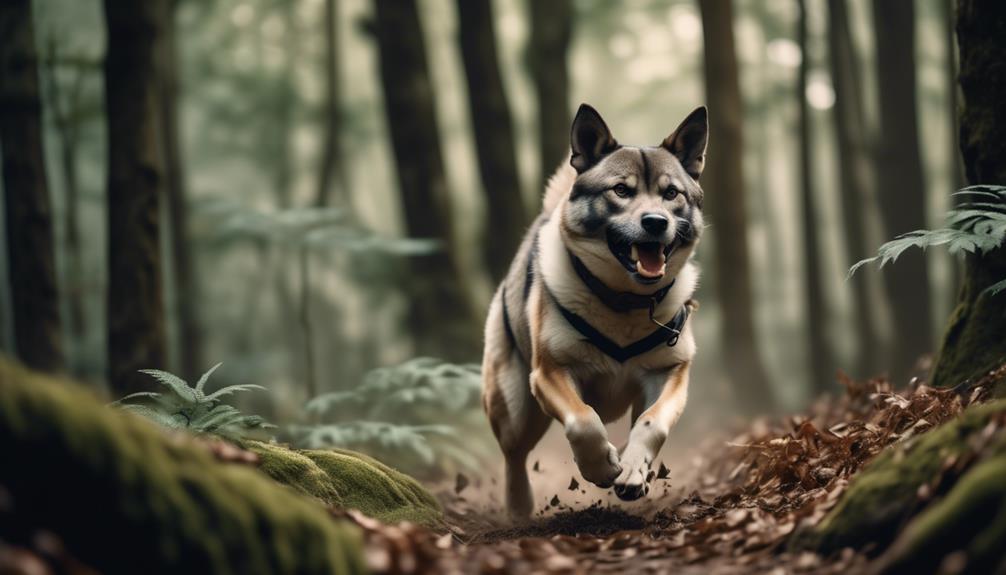
The Shikoku Dog, also known as the Kochi-ken or Japanese Wolfdog, had a crucial role in Japanese hunting. Bred by Matagi hunters in the 1700s, these dogs were originally used to track and contain wild boars. With their strong sense of smell and excellent tracking abilities, Shikokus were invaluable in helping hunters locate their prey.
Their agile and athletic nature allowed them to navigate through the dense forests and rugged terrains of Japan’s mountains. Today, while the Shikoku Dog is less commonly used for hunting, their hunting instincts and skills are still intact. These dogs continue to excel in various dog sports and activities that channel their natural hunting abilities.
Preservation of Shikoku Breed
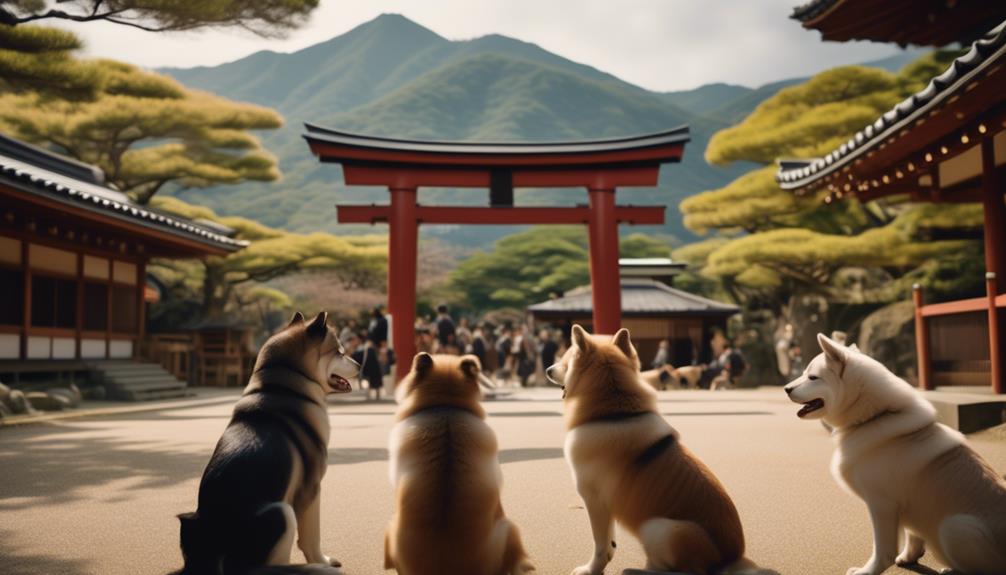
To ensure the continued existence and purity of the Shikoku breed, efforts have been made to preserve and protect these unique dogs. Here are four ways in which the preservation of the Shikoku breed is being carried out:
- Breed Clubs: The Nihon Ken Hozonkai (NIPPO) was formed in 1928 to preserve not only the Shikoku, but also other Japanese spitz-type breeds. These breed clubs play a crucial role in promoting responsible breeding practices and maintaining breed standards.
- Selective Breeding: Breeders carefully select mating pairs based on desired traits and genetic health to ensure the preservation of the Shikoku breed’s distinct characteristics. This helps maintain the breed’s unique qualities and prevent the dilution of genetic diversity.
- Genetic Testing: To minimize the risk of hereditary diseases and health issues, genetic testing is conducted on potential breeding dogs. This helps breeders make informed decisions and reduce the transmission of genetic disorders within the Shikoku population.
- Education and Awareness: Spreading knowledge about the history, characteristics, and importance of the Shikoku breed is crucial for its preservation. By raising awareness among dog enthusiasts and the general public, more people can appreciate and support the preservation efforts for these remarkable dogs.
Through these preservation initiatives, the Shikoku breed can continue to thrive and maintain its distinct identity for generations to come.
Recognition by American Kennel Club
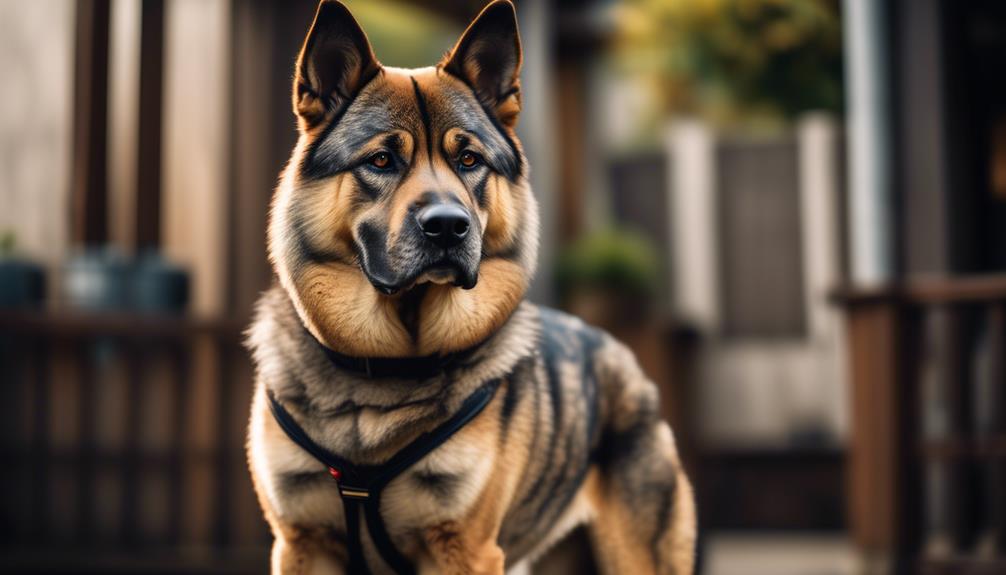
The American Kennel Club officially recognizes the Shikoku breed, solidifying its status among other recognized dog breeds. This recognition highlights the breed’s unique characteristics and historical significance.
The Shikoku, also known as the Kochi-ken or Japanese Wolfdog, is one of the six primitive dog breeds native to Japan. With its thick double coat and various colors, the Shikoku was originally used by Japanese hunters to track and contain wild boars.
The breed’s remote home in Japan’s mountainous island terrain helped maintain its purity throughout history. The American Kennel Club’s recognition of the Shikoku in their Foundational Stock Service group is a testament to the breed’s value and potential as a companion dog.
Shikoku Dog’s Temperament
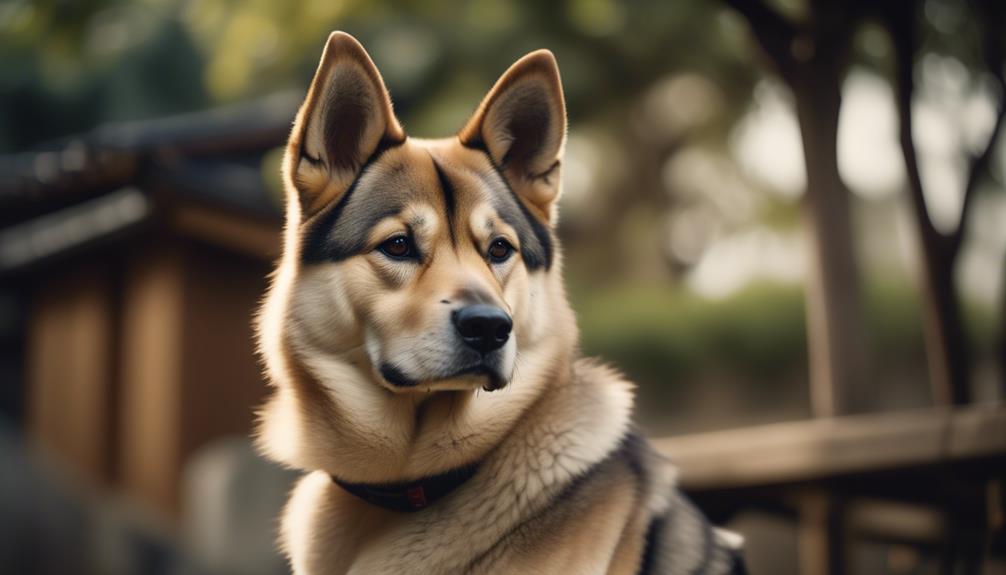
After being officially recognized by the American Kennel Club, the Shikoku breed’s unique temperament and personality traits have become an intriguing aspect for potential owners to consider. If you’re thinking about bringing a Shikoku into your life, here are four key characteristics of their temperament that you should know:
- Loyalty: Shikokus are incredibly loyal to their owners and form strong bonds with their families. They’ll always be by your side, offering their unwavering support and love.
- Independence: While they’re loyal, Shikokus also have an independent streak. They’re known for their self-reliance and may not always seek constant attention or affection.
- Alertness: Shikokus are highly alert and make excellent watchdogs. They’ve a keen sense of their surroundings and will alert you to any potential dangers or strangers.
- Strong-willed: Shikokus are known for their strong-willed nature. They can be quite stubborn at times and may require consistent training and firm leadership to ensure they follow commands.
These unique temperament traits make the Shikoku breed a fascinating choice for those seeking a loyal, independent, alert, and strong-willed companion.
Adaptability to Apartment Living
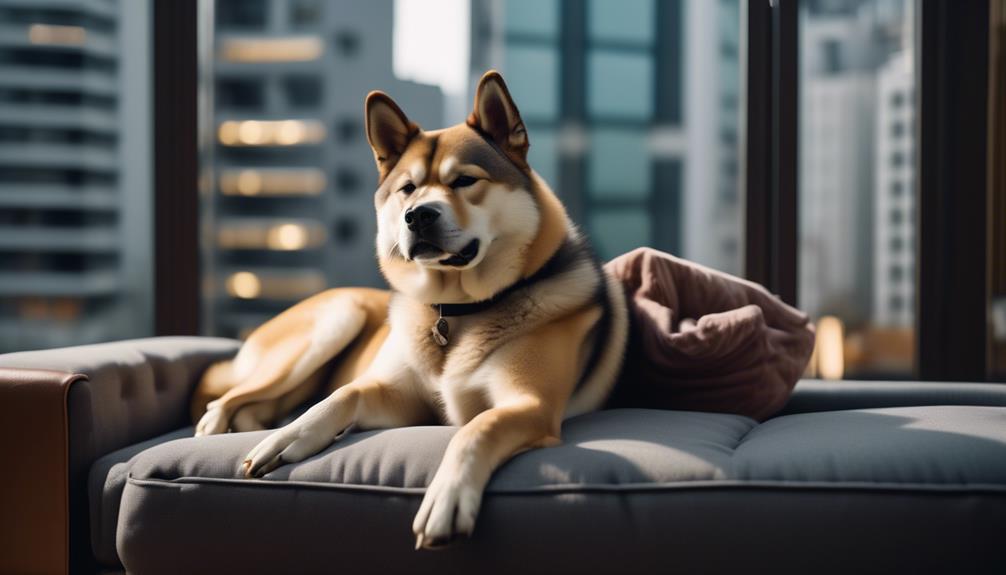
Shikoku dogs can easily adapt to apartment living due to their quiet demeanor, low energy levels, and polite behavior towards neighbors. When choosing a dog for an apartment, size alone shouldn’t be the sole determinant.
It’s important to prioritize qualities like being quiet, low-energy, calm indoors, and exhibiting good manners when living in close proximity to others. While some small dogs may exhibit high energy and frequent barking, making them less suitable for apartments, Shikoku dogs possess the desired qualities for apartment living.
Consider the energy levels of the dog breed and take into account your neighbors’ comfort when selecting a dog. By prioritizing these factors, you can create a harmonious living environment with your Shikoku dog in an apartment setting.
Choosing an Apartment Dog
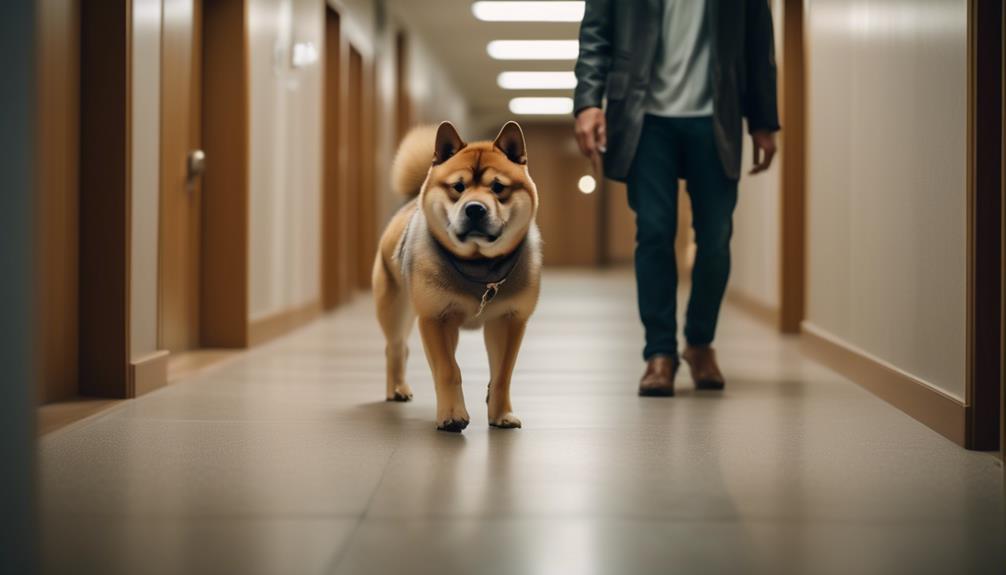
When looking for an ideal apartment dog, consider the dog’s size, energy level, and compatibility with your living situation. To help you make the right choice, here are four factors to consider:
- Size: While size alone shouldn’t be the sole determinant, smaller dogs generally adapt better to apartment living. They require less space and are easier to handle in a confined environment.
- Energy Level: Desirable qualities in an apartment dog include being quiet and low-energy. Look for breeds that are calm indoors and don’t require excessive exercise. This will help create a harmonious living environment for both you and your neighbors.
- Compatibility with Neighbors: Prioritize qualities like being quiet, low-energy, and exhibiting good manners when living in close proximity to others. A dog that barks excessively or shows aggression towards neighbors may not be suitable for apartment living.
- Breed Characteristics: Each breed has its own unique temperament and characteristics. Research the specific breed’s traits to ensure it aligns with your living situation. Some breeds are more adaptable to apartment living, while others may require more space and exercise.
Compatibility With Families
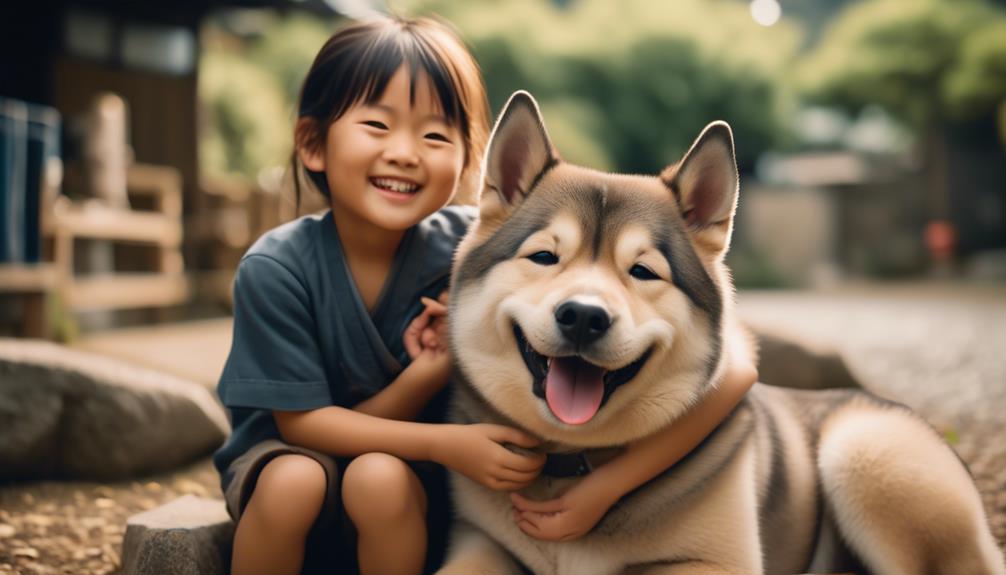
Consider the compatibility of the dog with your family when choosing an ideal apartment dog. Shikoku dogs prefer to be around adults or older kids who play gently. Their affectionate nature is an important factor in determining if they’re good with families.
Dogs bred for working or guarding independently may show less affection, while those bred to be companion animals are more likely to be outwardly affectionate.
Shikokus can get along with other dogs if introduced slowly and calmly, but early socialization is important for them to adapt to other pets. However, due to their high prey drive, they mightn’t do well with smaller pets.
Socializing Shikoku Dogs With Other Pets
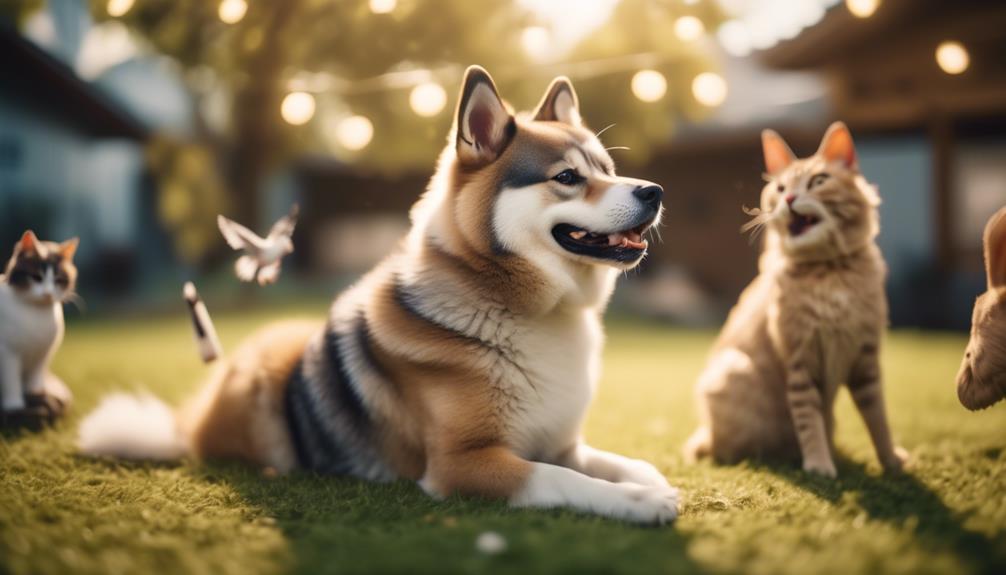
To ensure a smooth introduction between your Shikoku dog and other pets, it’s important to focus on proper socialization. Here are four tips to help you socialize your Shikoku dog with other pets:
- Start early: Begin socializing your Shikoku dog with other pets as early as possible. Puppies are more adaptable and open to new experiences, making it easier for them to adjust to the presence of other animals.
- Supervise interactions: Always closely supervise interactions between your Shikoku dog and other pets. This allows you to intervene if any aggressive or dominant behavior occurs, ensuring the safety of all animals involved.
- Gradual introductions: Introduce your Shikoku dog to other pets gradually, in a controlled and calm environment. Start with short supervised meetings and gradually increase the duration and frequency of interactions as they become more comfortable with each other.
- Positive reinforcement: Use positive reinforcement techniques, such as treats and praise, to reward your Shikoku dog for calm and friendly behavior towards other pets. This helps to create positive associations and encourages them to continue behaving well during interactions.
Exercise Needs of Shikoku Dogs
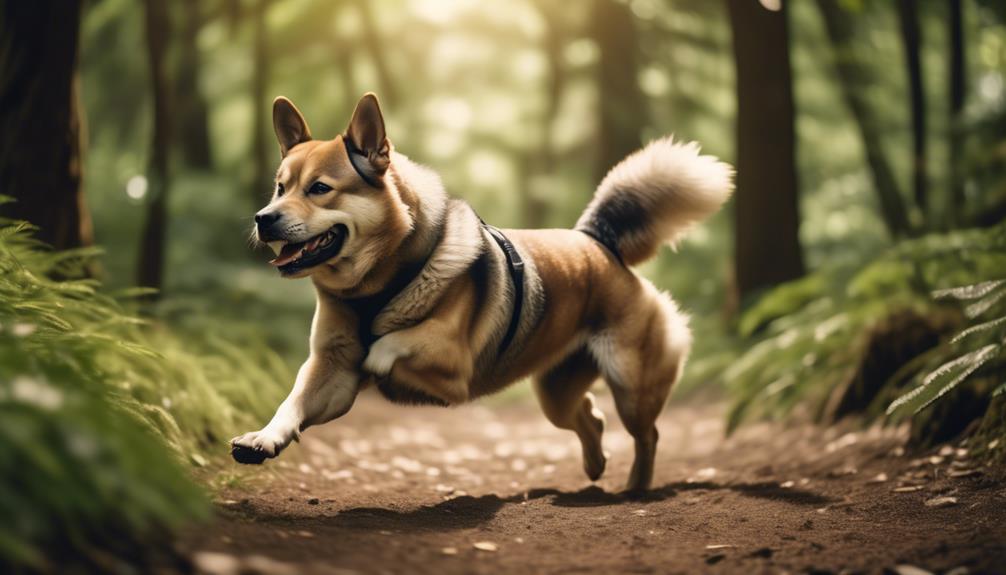
Shikoku dogs require regular exercise to maintain their physical and mental well-being. These high-energy dogs need a significant amount of exercise and mental stimulation to prevent weight gain and undesirable behaviors. They are a good fit for active individuals who enjoy outdoor activities. However, their intensity levels can vary among different dog breeds. To give you a better understanding of exercise needs, here is a table that compares the exercise requirements of low-energy and high-energy dogs:
| Low-Energy Dogs | High-Energy Dogs |
|---|---|
| Content with less exercise | Need daily, vigorous exercise |
| Do well with a slow evening stroll | Good for outdoorsy, active people |
| Suitable for homes with young kids or elderly individuals | May not be the best fit for homes with young kids or elderly individuals |
Understanding the exercise needs of Shikoku dogs will help ensure that they remain healthy and happy companions.
Shikoku Dog Coat Care and Rescue Options
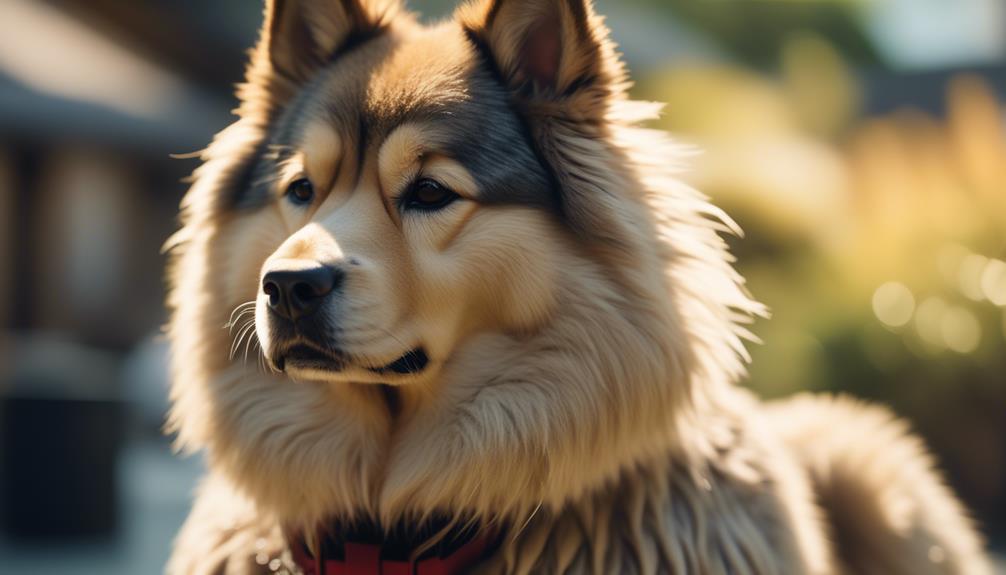
Taking care of the Shikoku dog’s coat and exploring rescue options are important aspects for potential owners to consider. Here are some tips for maintaining their beautiful coat and finding rescue options:
- Coat Care: The Shikoku has a thick double coat that requires regular brushing to keep it in good condition. Weekly brushing is usually sufficient, but during shedding season, you may need to brush every couple of days. This will help remove loose hair and prevent matting.
- Shedding Season: The Shikoku’s coat blows seasonally, meaning they’ll shed a significant amount of hair during certain times of the year. Be prepared for extra cleaning during these periods and consider using a de-shedding tool to help manage the shedding.
- Rescue Options: While specific Shikoku rescues might be rare, you can check local shelters as they may have Shikoku dogs available for adoption. Additionally, there are rescues that cater to all dog breeds, such as Wright-Way Rescue and Angels Among Us Pet Rescue. You can also use online platforms like DogTime’s adoption page to search for adoptable Shikoku dogs in your area.
Frequently Asked Questions
What Are the Health Concerns Specific to Shikoku Dogs?
When considering the health concerns specific to Shikoku dogs, it’s important to be aware of potential issues such as hip dysplasia, eye problems, and allergies. Regular vet check-ups and proper care can help ensure their well-being.
Are Shikoku Dogs Prone to Separation Anxiety?
Shikoku dogs can be prone to separation anxiety. It’s important to provide them with proper training, mental stimulation, and gradually increase their alone time to help them feel more comfortable when you’re not around.
How Do Shikoku Dogs Behave Around Strangers?
Shikoku dogs can be reserved around strangers but are generally friendly and polite. They may require proper socialization to feel comfortable. With early training and positive experiences, they can learn to be more welcoming to new people.
Do Shikoku Dogs Require Any Specialized Training or Handling?
Shikoku dogs do not require specialized training or handling. They are intelligent and eager to please, making them easy to train. Consistent positive reinforcement and socialization from an early age will help them thrive.
Can Shikoku Dogs Be Trained to Participate in Dog Sports or Activities?
Yes, Shikoku dogs can be trained to participate in dog sports or activities. They are intelligent and eager to please, making them suitable for agility, obedience, and more. With proper training and socialization, they can excel in these activities.
Conclusion
In conclusion, the Shikoku dog breed is a fascinating and rare breed with a rich history in Japan. They were originally used by hunters to track and contain wild boars. Today, they’re preserved by organizations like NIPPO and recognized by the American Kennel Club.
With their beautiful double coat and various coat colors, Shikokus make wonderful companions for families and can be socialized with other pets. They’ve moderate exercise needs and require regular coat care.
Consider bringing a Shikoku into your life and experience their unique qualities!




